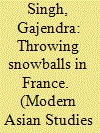| Srl | Item |
| 1 |
ID:
094877


|
|
|
|
|
| Publication |
2010.
|
| Summary/Abstract |
The rural inhabitants of the Himalayan region have been exploiting forest resources for their livelihood for generations. The excessive and uncontrolled use of firewood for domestic purposes has ended up with severe deforestation. Therefore, quantification, assessment and restoration of such valuable but exhaustible resources and is imperative their scientific management. The estimates reflect that a total of 88 species are consumed as fuelwood (54 trees and 34 shrubs) by the local people. Fuelwood consumption by 'dhaba' (roadside refreshment establishments) owners (90-120 kg/household/day) was much higher over the common villagers (20-22 kg/household/day). The fuelwood is mainly burnt for cooking, water heating, space heating and lighting, etc. Among these, cooking consumes the fuelwood most. In addition, fuelwood demand increases due to influx of tourists. In the near future, this may also affect the status of the undisturbed forests at the middle elevation. The information in this communication could be utilized for developing various conservation and sustainable strategies in the region to mitigate the impact of forest resource for fodder and fuelwood.
|
|
|
|
|
|
|
|
|
|
|
|
|
|
|
|
| 2 |
ID:
132966


|
|
|
|
|
| Publication |
2014.
|
| Summary/Abstract |
The arrival of Indian sipahis (or 'sepoys') to fight alongside soldiers of the British Expeditionary Force in France in October 1914 was both a victory and a source of concern for the British Raj. It proved to be the zenith of martial race fantasies that had been carefully codified from the 1890s, and birthed fears about the effects that Europe and the rapidly intensifying conflict on the Western Front would have upon the 'best black troops in the world'. The situation resulted in the appointment of a special military censor to examine the letters sent to and from Indian sipahis and compile a fortnightly summary of Indian letters from France for the duration of the First World War. This paper investigates a portion of the letters contained in these reports. More particularly, it investigates the life of a single chain letter and the effect its chiliastic message had upon Muslim troops of the Indian Army during the First World War. As the letter was read, rewritten, and passed on, it served as a rejoinder to missionary efforts by the Ahmadiyya Movement, reinterpreted as a call for soldiers to purify their own bodies and oppose interracial sexual relationships, before, finally, being used as a critique of the British war effort against the Ottoman empire.
|
|
|
|
|
|
|
|
|
|
|
|
|
|
|
|